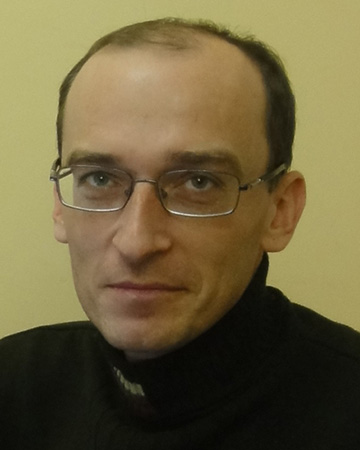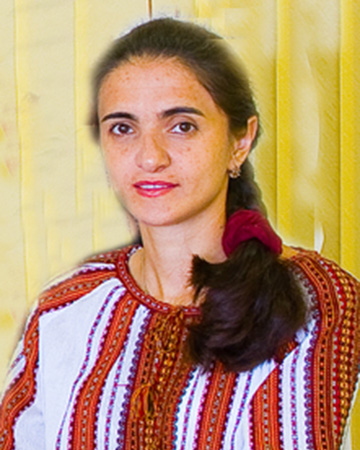|
 UDC 314.186(477)"1920/1930"; JEL А14, І11, I18
UDC 314.186(477)"1920/1930"; JEL А14, І11, I18
Teslyuk, R. T., Andrusyshyn, N. I., & Bachynska, M. V. (2021). Osoblyvosti vidtvorennya naselennya USRR v 1920-1930 rokakh u parametrakh demohrafichnoyi stiykosti [The features of the USSR population reproduction in 1920–1930 in the demographic stability parameters]. Rehional'na ekonomika - Regional Economy, 100 (2), 110-124. DOI: https://doi.org/10.36818/1562-0905-2021-2-11. [in Ukrainian].
Sources: 31
Authors
Teslyuk Roman TadeyovychPh.D. of Geography, Senior Researcher
Senior Researcher of the Department of problems of social and humanitarian development of the regions of the Dolishniy Institute of Regional Research of NAS of Ukraine; Senior Researcher of the National Museum of the Holodomor-Genocide
Contacts:  r.teslyuk@gmail.com, r.teslyuk@gmail.com,  (032)297-38-91, (032)297-38-91,  (099)447-0681, (099)447-0681,  (097)500-9032 (097)500-9032
Webpages:         

Andrusyshyn Nataliya IvanivnaPh.D. of Economics
Senior Researcher of the Department of problems of social and humanitarian development of the regions of the Dolishniy Institute of Regional Research of NAS of Ukraine
Contacts:  andnat@ukr.net, andnat@ukr.net,  andnat@rambler.ru, andnat@rambler.ru,  (066)115-4126 (066)115-4126
Webpages:       

Bachynska Mariya VolodymyrivnaPh.D. of Economics
Researcher of the Department of problems of social and humanitarian development of the regions of the Dolishniy Institute of Regional Research of NAS of Ukraine
Contacts:  maricka1104@gmail.com, maricka1104@gmail.com,  (097)697-1131, (097)697-1131,  (032)270-6445 (032)270-6445
Webpages:         
ResumeThe 1932–1933 Holodomor genocide caused a significant reduction of the population and distorted the main parameters of the country’s demographic stability. To analyze the changes in the population by the longitudinal analysis method, the survival rates are calculated for age groups of the population in the intercensal periods. Calculations based on the data of 1926 and 1939 censuses show substantial inconsistencies in the survival rate for five female age groups within the range of 33-57 years old. Despite the 1932–1933 demographic catastrophe and taking into account the natural mortality before and after the Holodomor, the number of people in these age categories changed slightly and even increased for the 43-47 category. The authors prove that migration in the intercensal period couldn’t have caused such growth, and the calculated coefficients confirm the questionable quality of the 1939 census. The paper reveals that the first stage of demographic transition should have been in 1932–1933, yet historical-political and socio-economic conditions of demographic reproduction aggravated considerably in early 1930. The recovery of the high birth rate in 1937–1938 shows that the first stage of demographic transition wasn’t finalized. Calculation of the number of women in the most active childbirth age and analysis of birth rate for 1924–1929 shows that in 1930–1933, the birth rate should have increased. The calculated indirect demographic losses account 310,000-430,000 annually for 1930, 1931, 1937, and 1938, and from 630,000 to 1 million for 1932–1936. Such insignificant volume of indirect losses substantially reduced demographic stability, in the first place of Ukrainian village. The incomplete and questionable nature of demographic data after 1932 does not allow complete reconstruction of the demographic reproduction processes in the USSR in the 1930s. Archive data on the natural movement of the population on lover administrative-territorial levels, current statistical recordings, and recordings of the civil status acts on birth and mortality, etc. can be the perspective sources of demographic information.
Keywords:demographic reproduction, 1920–1930, USSR, gender and age structure of the population,1932–1933 Holodomor genocide, longitudinal analysis method, demographic stability
ReferencesHrynkevych, O., Sorochak, O., Panukhnyk, O., Popadynets, N., Bilyk, R., Khymych, I., & Yazina, V. (2020). Competitiveness of higher education system as a sector of economy: Conceptual model of analysis with application to Ukraine. In Intelligent Human Systems Integration 2020. IHSI 2020. Advances in Intelligent Systems and Computing: Vol. 1131 (pp. 439-445). Springer, Cham. Retrieved from https://doi.org/10.1007/978-3-030-39512-4_69
|